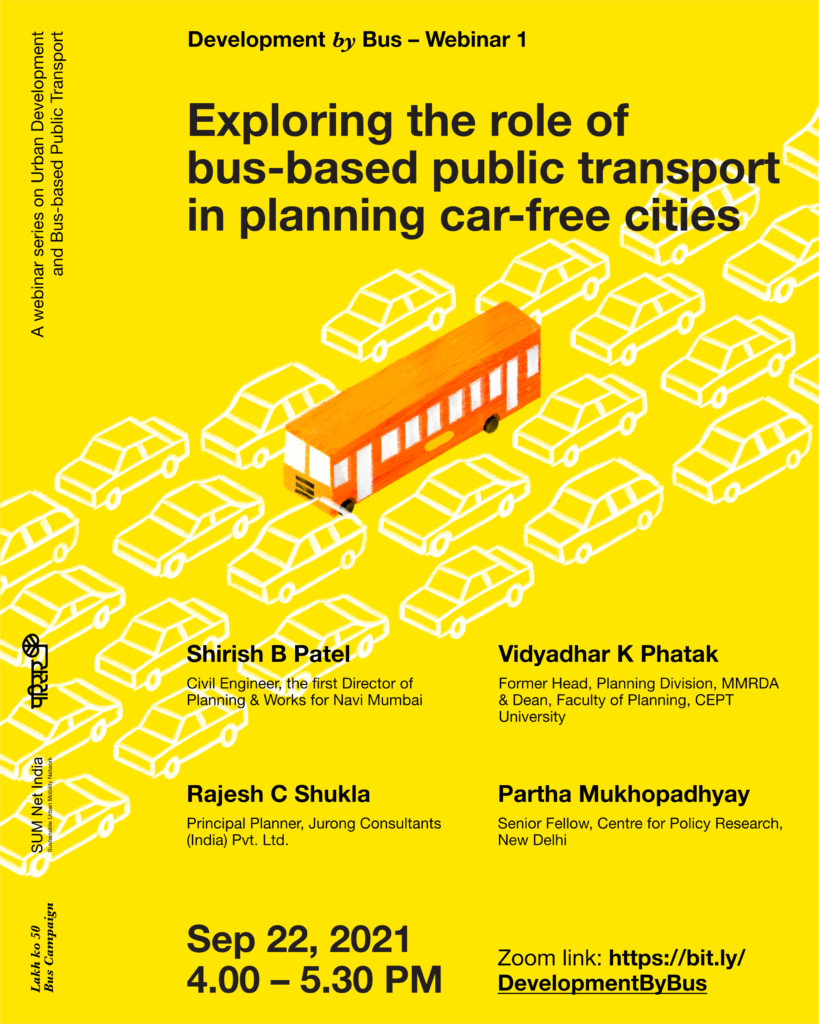On the occasion of World Car Free Day, Parisar organised a virtual discussion with urban planners and experts to explore the role of bus-based public transport in moving towards cities that are not dominated by private vehicles and where people without cars or two-wheelers are not mobility impaired. Making plans for areas beyond municipal limits and issuing a set of guidelines to incorporate transport within the framework of a Development Plan were a few recommendations identified for the Urban Development Department, Government of Maharashtra.

The webinar delved into the factors, approaches and interventions required at an urban planning level to ensure cities are not dominated by private vehicles. While Shirish Patel emphasized the role of grids and basic street networks which are planned around public transport, Rajesh Shukla, Principal Planner at Jurong Consultants Pvt Ltd focused on demand management through an integrated land-use transport planning approach. He added, “Urban buses are run and managed by different entities and therefore many common resources like depots and bus stops are not shared.”
Vidyadhar Phatak, a pioneer in the field of planning and housing, talked about improvements required in both plan-making and plan-implementation stages. “Plans are still made for areas within municipal limits. The local area plans must be made for peri-urban areas outside municipality boundaries so that a plan allows for the future as it unfolds. Public transport planning ahead of the demand has many benefits which should be included in the cost-benefit analysis of transportation. The Urban Development Department should ensure that guidelines are issued for planners to incorporate transport in the framework of a development plan.”
At the implementation stage, Mr. Phatak said that the public realms need to be increased over private realms. Partha Mukhopadhyay, Senior Fellow at Centre for Policy Research, New Delhi echoed this point. He said, “The Urban Development Department has an important role to play to ensure that public land is repurposed for public use.”
Parisar made a presentation which showed that between 2015 to 2019 the number of urban buses on the roads in the cities of Maharashtra did not increase at all! While the urban bus fleet seems to be increasing for cities like Mumbai and Pune, cities like Nagpur, Aurangabad, Amravati, Nashik, etc continue to struggle to put a well-functioning bus system in place.
Swati Pathak, the campaign manager said, “Along with the set of recommendations identified in this webinar, Parisar will share a report on urban development and bus-based public transport to Sh. Eknath Shinde, Minister of Urban Development, Government of Maharashtra, in the coming few months.”
The meeting was organized as part of a statewide campaign—Lakh ko 50—which highlights the necessity for at least 50 buses per lakh urban population (a benchmark set by the Ministry of Housing and Urban Affairs) for all cities of Maharashtra. It has been launched by the Sustainable Urban Mobility Network (SUM Net), a coalition of individuals, voluntary organizations, and civil society networks and movements promoting sustainable urban transport solutions across India.